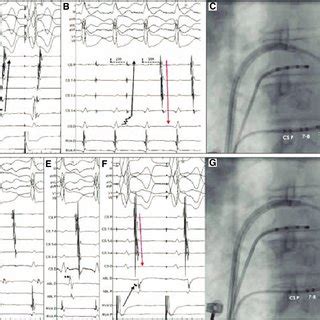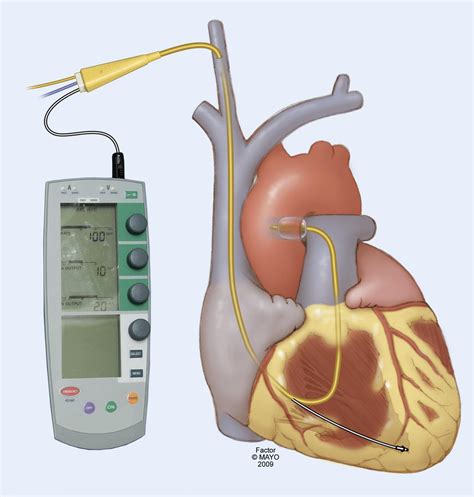lv pacing meaning | retrograde left ventricular pacing lv pacing meaning LV septal pacing resulted in a narrower QRS (144 ± 20 ms) and provided acute hemodynamic benefits over RV pacing. Both LV septal pacing and LBBAP can result in a relatively narrow . FEL-O-VAX Lv-K®. Fort Dodge. Feline Leukemia Vaccine. Killed Virus For vaccination of healthy cats 10 weeks of age or older, as an aid in the prevention of disease caused by feline leukemia virus. DOSE: Inject one 1 mL dose intramuscularly or subcutaneously using aseptic technique. Repeat in 3 to 4 weeks.
0 · retrograde left ventricular pacing
1 · rapid ventricular pacing
2 · left ventricular pacing therapy
3 · left ventricular pacing chart
4 · left bundle branch pacing technique
5 · left bundle branch pacing guidelines
6 · left bundle branch area pacing
7 · best left ventricular pacing
Fear and Loathing in Las Vegas Poster, Natural Canvas wall art, gift idea for movie lovers, decoration home living dinning room dorm office. (84) $19.89. Fear and Loathing in Las Vegas Poster | Wall Decor | Hunter S Thompson | Poster | Multiple Sizes. (330) $19.80. FREE shipping.
Thus, left bundle branch pacing (LBBP) has emerged as an alternative method for delivering physiological pacing to achieve electrical synchrony of the left ventricle (LV), 3–7 especially in patients with infranodal atrioventricular block and left bundle branch block (LBBB).Patients with left ventricular ejection fraction (LVEF) of 35%–50% who are expected .LV septal pacing resulted in a narrower QRS (144 ± 20 ms) and provided acute hemodynamic benefits over RV pacing. Both LV septal pacing and LBBAP can result in a relatively narrow . The mean absolute septolateral delay was similar with LV (54.5±43.5 milliseconds) and BiV (59.4±42.2 milliseconds) pacing (P=0.4376) and was no different from baseline .
Optimal left ventricular (LV) pacing requires placement of the lead in a stable location that is free of significant phrenic nerve stimulation (PNS) and is likely to result in clinical benefit.Right ventricular pacing causes electric and mechanical dyssynchrony, which is associated with an increased risk for heart failure and atrial fibrillation. Cardiac resynchronization therapy with . Pacing via the retrograde left ventricular guidewire (LV-GW) is an alternative strategy to conventional pacing using a right ventricular temporary pacing wire (RV-TPW). We . Patients with left ventricular ejection fraction (LVEF) of 35%–50% who are expected to require less than substantial (< 20%–40%) ventricular pacing may not have a .
An optimal placement of the left ventricular (LV) lead appears crucial for the intended hemodynamic and hence clinical improvement. A well-localized target area and tools that help . Endocardial left ventricular (LV) pacing is an alternative therapy for patients who do not respond to conventional CRT or in whom placement of a lead via the coronary sinus is not . LV Pacing Best Practice. This recommended approach to unipolar LV guidewire pacing out-lines the key steps of LV guidewire pacing during the phases of the TAVR .
Thus, left bundle branch pacing (LBBP) has emerged as an alternative method for delivering physiological pacing to achieve electrical synchrony of the left ventricle (LV), 3–7 especially in patients with infranodal atrioventricular block and left bundle branch block (LBBB).LV septal pacing resulted in a narrower QRS (144 ± 20 ms) and provided acute hemodynamic benefits over RV pacing. Both LV septal pacing and LBBAP can result in a relatively narrow QRS with RBB morphology. The mean absolute septolateral delay was similar with LV (54.5±43.5 milliseconds) and BiV (59.4±42.2 milliseconds) pacing (P=0.4376) and was no different from baseline (58.0±41.8 milliseconds). However, LV pacing resulted in a shorter interventricular delay than BiV pacing (10.6±27.5 versus 18.3±22.9 milliseconds; P =0.0050).
Optimal left ventricular (LV) pacing requires placement of the lead in a stable location that is free of significant phrenic nerve stimulation (PNS) and is likely to result in clinical benefit.Right ventricular pacing causes electric and mechanical dyssynchrony, which is associated with an increased risk for heart failure and atrial fibrillation. Cardiac resynchronization therapy with biventricular pacing reduces ventricular dyssynchrony and results in clinical benefits in subsets of patients with heart failure with QRS prolongation. Pacing via the retrograde left ventricular guidewire (LV-GW) is an alternative strategy to conventional pacing using a right ventricular temporary pacing wire (RV-TPW). We report our single center experience with this strategy. Patients with left ventricular ejection fraction (LVEF) of 35%–50% who are expected to require less than substantial (< 20%–40%) ventricular pacing may not have a sizable benefit from CPP; therefore, traditional RV lead placement with minimization of ventricular pacing, CSP, or CRT in the setting of LBBB are all acceptable options. 7.

retrograde left ventricular pacing
An optimal placement of the left ventricular (LV) lead appears crucial for the intended hemodynamic and hence clinical improvement. A well-localized target area and tools that help to achieve successful lead implantation seem to be of utmost importance to . Endocardial left ventricular (LV) pacing is an alternative therapy for patients who do not respond to conventional CRT or in whom placement of a lead via the coronary sinus is not possible. LV Pacing Best Practice. This recommended approach to unipolar LV guidewire pacing out-lines the key steps of LV guidewire pacing during the phases of the TAVR procedure; the procedure setup, LV guidewire placement, circuit grounding and connection, capture testing and valve deployment (Table 1). Thus, left bundle branch pacing (LBBP) has emerged as an alternative method for delivering physiological pacing to achieve electrical synchrony of the left ventricle (LV), 3–7 especially in patients with infranodal atrioventricular block and left bundle branch block (LBBB).
LV septal pacing resulted in a narrower QRS (144 ± 20 ms) and provided acute hemodynamic benefits over RV pacing. Both LV septal pacing and LBBAP can result in a relatively narrow QRS with RBB morphology.
The mean absolute septolateral delay was similar with LV (54.5±43.5 milliseconds) and BiV (59.4±42.2 milliseconds) pacing (P=0.4376) and was no different from baseline (58.0±41.8 milliseconds). However, LV pacing resulted in a shorter interventricular delay than BiV pacing (10.6±27.5 versus 18.3±22.9 milliseconds; P =0.0050).
Optimal left ventricular (LV) pacing requires placement of the lead in a stable location that is free of significant phrenic nerve stimulation (PNS) and is likely to result in clinical benefit.Right ventricular pacing causes electric and mechanical dyssynchrony, which is associated with an increased risk for heart failure and atrial fibrillation. Cardiac resynchronization therapy with biventricular pacing reduces ventricular dyssynchrony and results in clinical benefits in subsets of patients with heart failure with QRS prolongation.
Pacing via the retrograde left ventricular guidewire (LV-GW) is an alternative strategy to conventional pacing using a right ventricular temporary pacing wire (RV-TPW). We report our single center experience with this strategy. Patients with left ventricular ejection fraction (LVEF) of 35%–50% who are expected to require less than substantial (< 20%–40%) ventricular pacing may not have a sizable benefit from CPP; therefore, traditional RV lead placement with minimization of ventricular pacing, CSP, or CRT in the setting of LBBB are all acceptable options. 7.

An optimal placement of the left ventricular (LV) lead appears crucial for the intended hemodynamic and hence clinical improvement. A well-localized target area and tools that help to achieve successful lead implantation seem to be of utmost importance to .
Endocardial left ventricular (LV) pacing is an alternative therapy for patients who do not respond to conventional CRT or in whom placement of a lead via the coronary sinus is not possible.

cara delevingne chanel 2017

rapid ventricular pacing
Tekstilizstrādājumu vairumtirdzniecība (46.41, versija 2.0) (Datu avots: VID) Darba apģērbu ražošana (14.12, versija 2.0) (Datu avots: CSP) Mazumtirdzniecība pa pastu vai Interneta veikalos (47.91, versija 2.0) (Datu avots: ZO.LV)
lv pacing meaning|retrograde left ventricular pacing



























